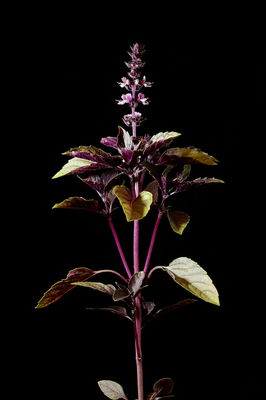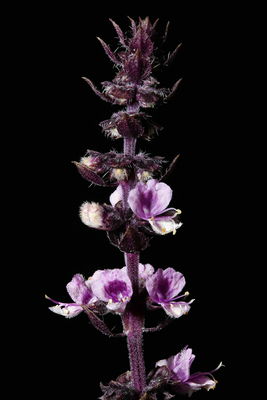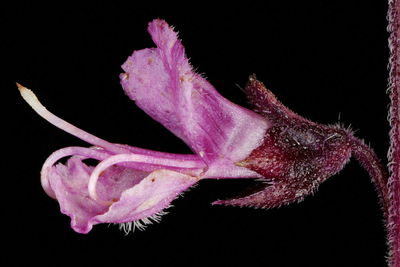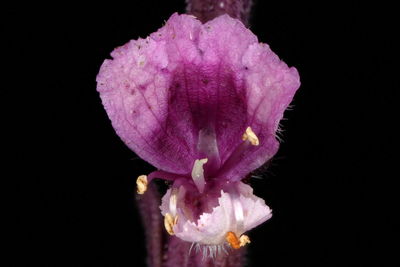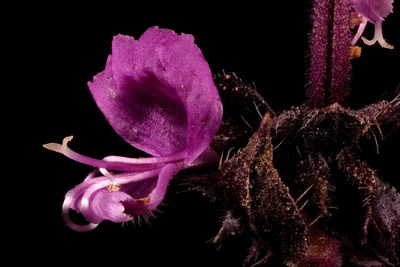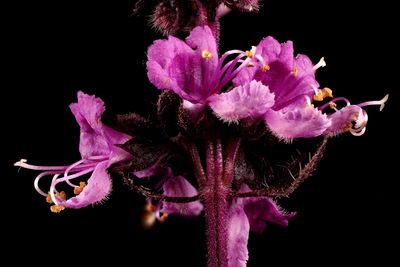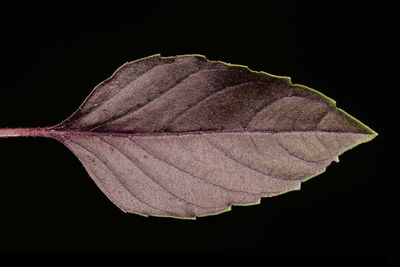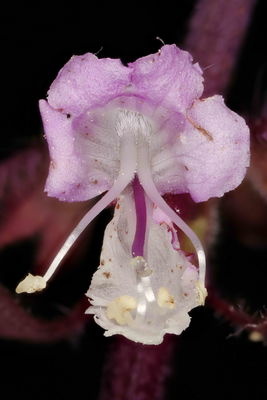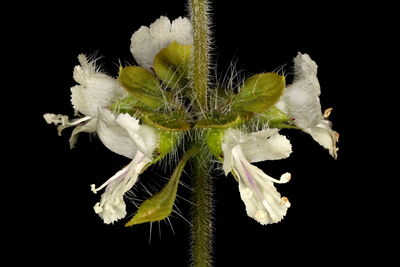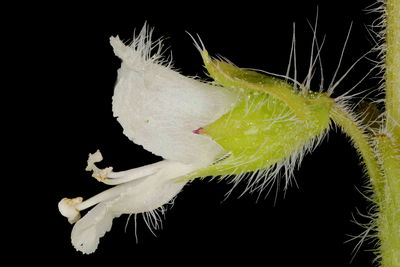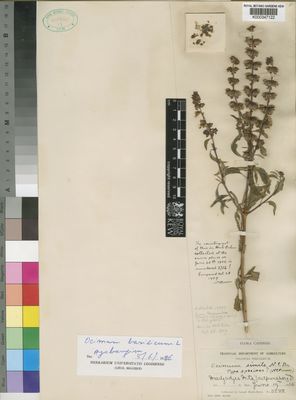Geography and distribution
Tropics of Asia and Africa; widely cultivated elsewhere.
Description
Ocimum basilicum is an aromatic, annual herb, 0.3-0.5 metres tall, but some cultivars can reach up to 1 m. The plant is almost hairless. Some cultivars, such as the 'Dark Opal', have leaves and stems deep purple in colour. The leaves are ovate, often puckered, flowers white or pink, and fruits have four small nutlets, which are mucilaginous when wet.
Ocimum basilicum is closely related to and frequently confused with Ocimum africanum and Ocimum americanum , but they can be identified on the basis of indumentum (hair distribution) and flower size. Lemon-scented cultivars are usually the result of crosses between O. basilicum and O. africanum .
Uses
Basil is used to flavour soups and sauces and is the main ingredient of pesto sauce. The leaves can be eaten as a salad. Basil is also used in perfumery, soap-making, and to flavour liqueurs. The seeds are edible, and when soaked in water become mucilaginous. In parts of the Mediterranean they are made into a refreshing drink known as cherbet tokhum.
Basil is widely used in systems of traditional medicine, including Ayurveda and traditional Chinese medicine. It is used for treating digestive system disorders, such as stomach ache and diarrhoea, kidney complaints, and infections. In Africa, for example, it is used for treating whooping cough and various types of fever. The leaves are pulped in water to make ear- and eye-drops in parts of west Africa, and a leaf decoction is used for treating coughs.
The leaves are used to make an insecticide that can protect stored crops from beetle damage
Millennium Seed Bank: Seed storage
The Millennium Seed Bank Partnership aims to save plant life worldwide, focusing on plants under threat and those of most use in the future. Seeds are dried, packaged and stored at a sub-zero temperature in Kew's seed bank vault at Wakehurst.
Number of seed collections stored in the Millennium Seed Bank: 13
Seed storage behaviour: Orthodox (the seeds of this plant survive being dried without significantly reducing their viability, and are therefore amenable to long-term frozen storage such as at the MSB)
Germination testing: Successful
Composition values: Oil content 24%, Protein 21%
Cultivation
Unlike other herbs grown in the same family (Lamiaceae) such as rosemary, sage and mint, basil is tropical in origin and as a result is not frost-hardy.




